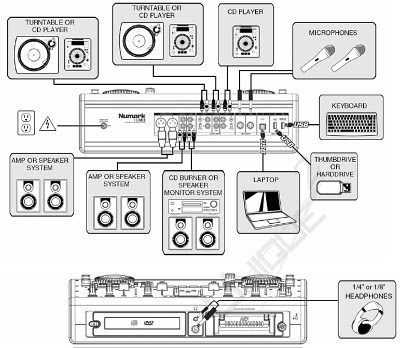You live your life at 2.4GHz. Your router, your cordless phone, your Bluetooth earpiece, your baby monitor and your garage opener all love and live on this radio frequency, and no others. Why? The answer is in your kitchen.
What We're Talking About
Before we charge too far ahead here, let's run over the basics. Your house or apartment, or the coffee shop you're sitting in now, is saturated with radio waves. Inconceivable numbers of them, in fact, vibrating forth from radio stations, TV stations, cellular towers, and the universe itself, into the space you inhabit. You're being bombarded, constantly, with electromagnetic waves of all kind of frequencies, many of which have been encoded with specific information, whether it be a voice, a tone, or digital data. Hell, maybe even these very words.
On top of that, you're surrounded by waves of your own creation. Inside your home are a dozen tiny little radio stations: your router, your cordless phone, your garage door opener. Anything you own that's wireless, more or less. Friggin' radio waves: they're everywhere.
Really, it's odd that your cordless phone even has that 2.4GHz sticker. To your average, not-so-technically-inclined shopper, it's a number that means A) nothing, or B) something, but the wrong thing. ("2.4GHz? That's faster than my computer!")
What that number actually signifies is broadcast frequency, or the frequency of the waves that the phone's base station sends to its handset. That's it. In fact, the hertz itself just a unit for frequency in any context: it's the number of times that something happens over the course of a second. In wireless communications, it refers to wave oscillation. In computers, it refers to processor clock rates. For TVs, the rate at which the screen refreshes; for me, clapping in front of my computer right now, it's the rate at which I'm doing so. One hertz, slow clap.
The question, then, is why so many of your gadgets operate at 2.4GHz, instead of the ~2,399,999,999 whole number frequencies below it, or any number above it. It seems almost controlled, or guided. It seems, maybe, a bit arbitrary. It seems, well, regulated.
A glance at FCC regulations confirms any suspicions. A band of frequencies clustered around 2.4GHz has been designated, along with a handful of others, as the Industrial, Scientific, and Medical radio bands. "A lot of the unlicensed stuff—for example Wi-Fi—is on the 2.4GHz or the 900Mhz frequencies—the ISM bands. You don't need a license to operate on them." That's Ira Kelpz, Deputy Chief, Office of Engineering and Technology at the Federal Communications Commission, explaining precisely why these ISM bands are attractive to gadget makers: They're free to use. If routers and cordless phones and whatever else are relegated to a small band 2.4GHz, then their radio waves won't interfere with, say, cellphones operating at 1.9GHz, or AM radio, which broadcasts between 535 kHz and 1.7 MHz. The ISM is, in effect, a ghetto for unlicensed wireless transmission, recommended first by a quiet little agency in a Swiss office of the UN, called the ITU, then formalized, modified and codified for practical use by the governments of the world, including, of course, our own FCC.
The current ISM standards were established in 1985, and just in time. Our phones were one the cusp of losing their cords, and in the near future, broadband internet connections would come into existence and become magically wireless. All these gadgets needed frequencies that didn't require licenses, but which were nestled between the ones that did. Frequencies that weren't so high that they sacrificed broadcast penetration (through walls, for example), but weren't so low that they required foot-long antennae. In short, they needed the ISM bands. So they took them.





















